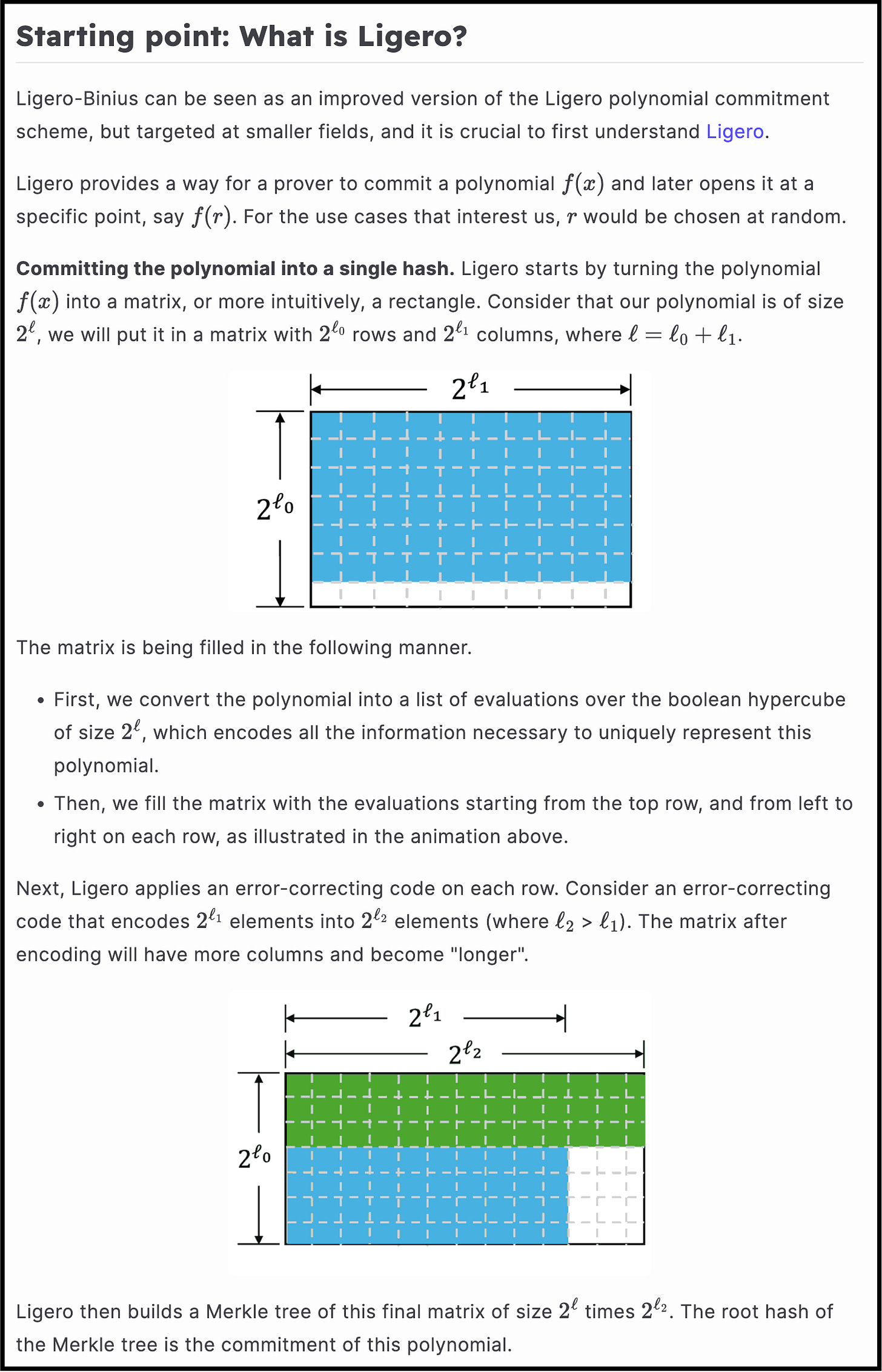In the past year, there have been a number of new ZK proof systems. One that interests us the most is Binius from Irreducible (formerly known as Ulvetanna).
We pay specific attention to this proof system because our portfolio company, RISC Zero, who has been developing the RISC-V zkVM, told us that Binius will be the next generation proof system and we should keep an eye on. Eddy Lazzarin, CTO of a16zcrypto, also has put Binius "as a top priority" for their proof system, Jolt.
We want to provide a high-level explanation of the Binius protocol. There are two papers on Binius: Ligero-Binius (2023) and FRI-Binius (2024). We will dedicate two technical articles for Binius.
In the first article, we will explain Ligero-Binius, which is simpler, as the first step for understanding Binius. This article is available on HackMD.
https://hackmd.io/@l2iterative/binius
To help navigate the different concepts in Binius, we created a number of animations. This is the first time we use animations in research articles, and we are eager to get your feedback.
We would like to thank Radisav Cojbasic, Jim Posen, and Benjamin Diamond from Irreducible for reviewing this article and providing feedback.
The second article will discuss FRI-Binius, the more recent version of Binius.
Find L2IV at l2iterative.com and on Twitter @l2iterative
Author: Weikeng Chen, Research Partner, L2IV
Disclaimer: This content is provided for informational purposes only and should not be relied upon as legal, business, investment, or tax advice. You should consult your own advisors as to those matters. References to any securities or digital assets are for illustrative purposes only and do not constitute an investment recommendation or offer to provide investment advisory services.


